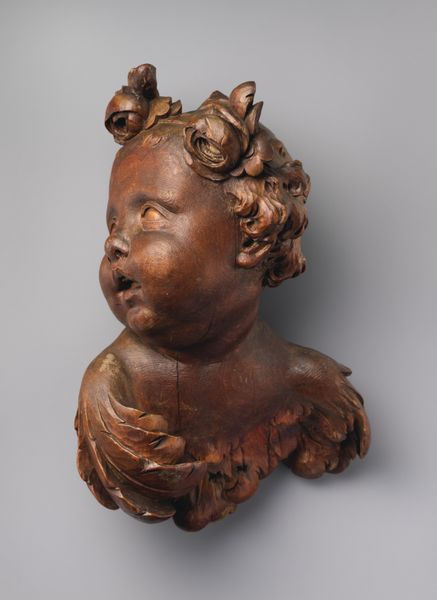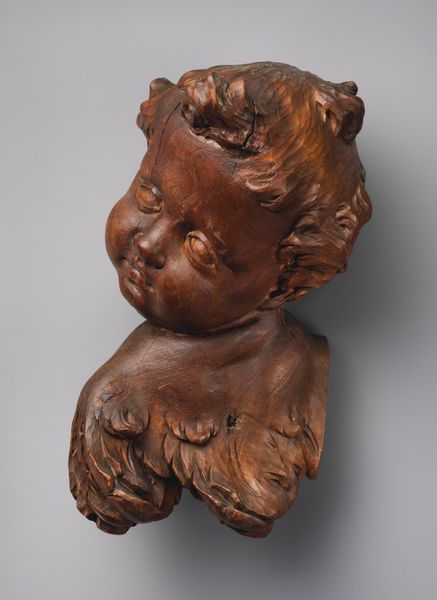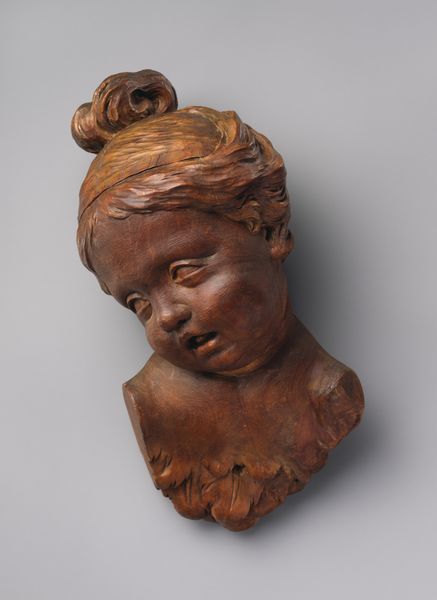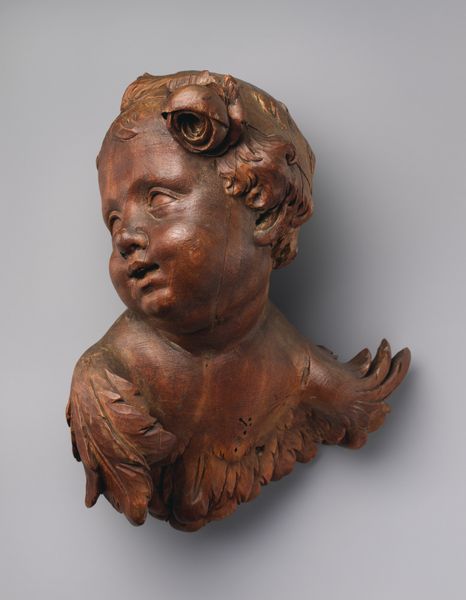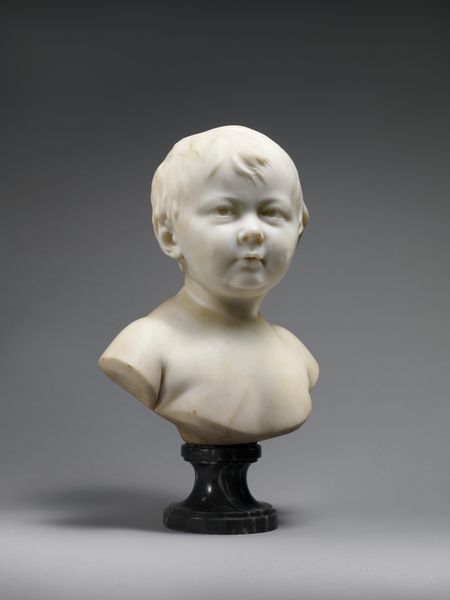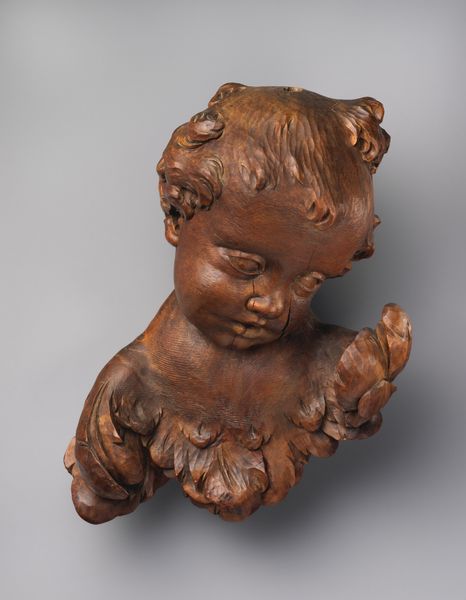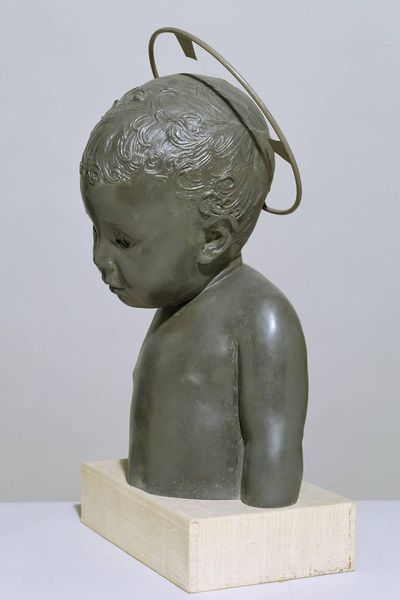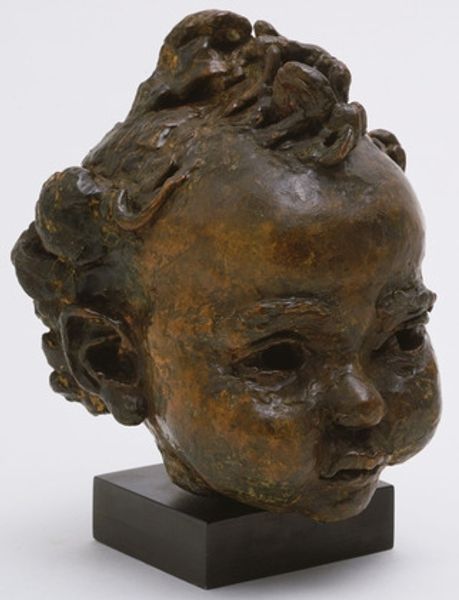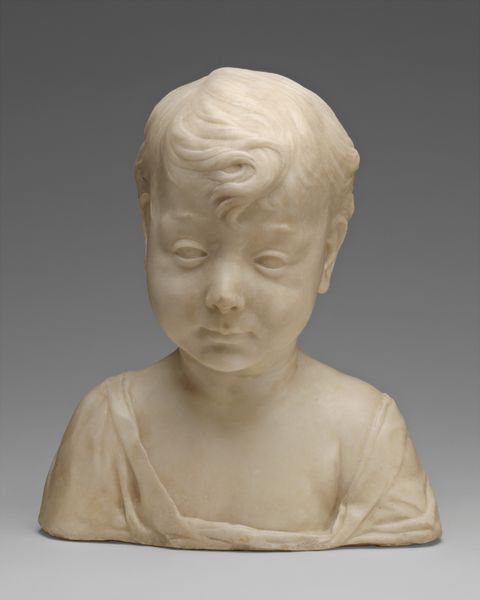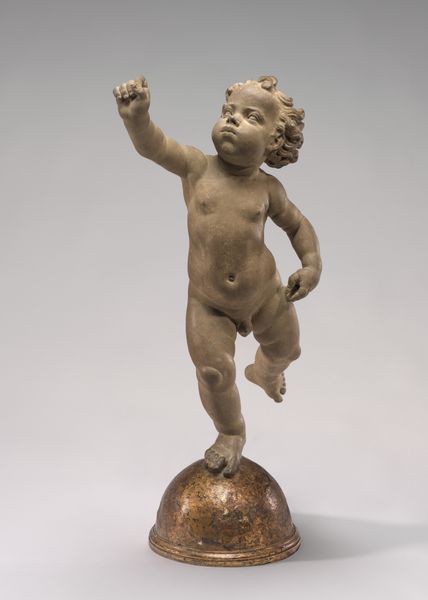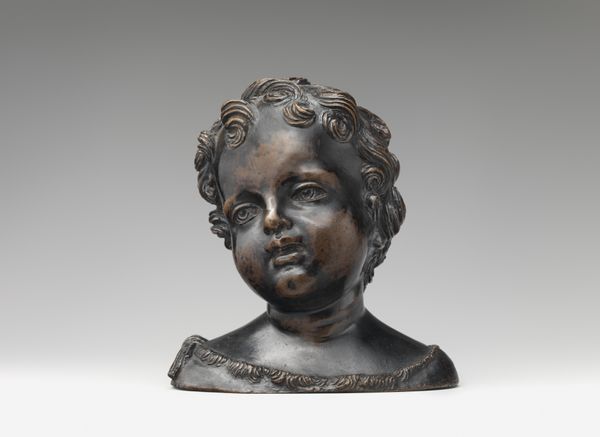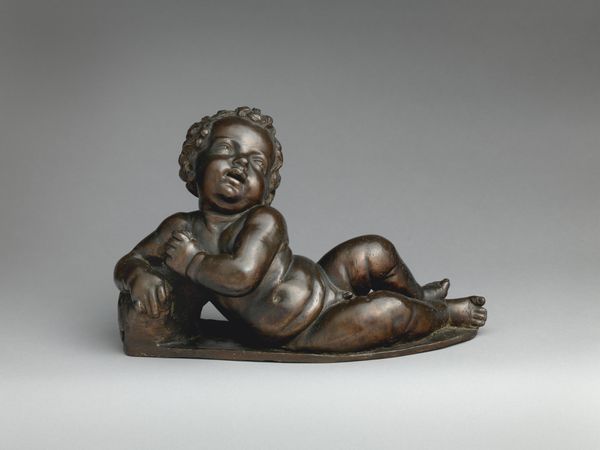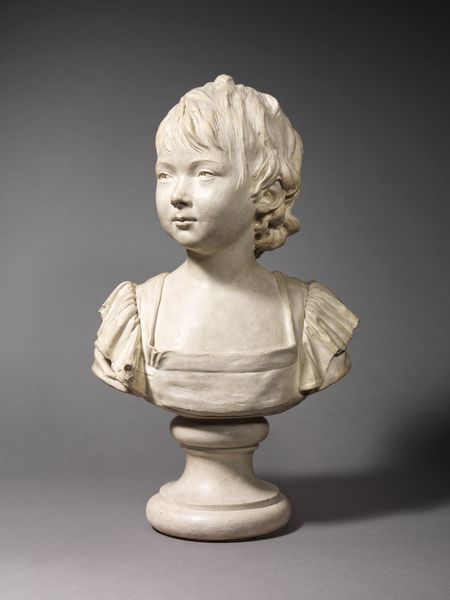
Comte d'Artois (later Charles X, King of France) c. 20th century
0:00
0:00
Dimensions: height: 34.3 cm (13 1/2 in.)
Copyright: National Gallery of Art: CC0 1.0
Curator: This captivating sculpture, dating from around the 20th century, is a portrait of the Comte d'Artois, who later became Charles X, King of France. Editor: My first impression is the smooth, almost doughy quality of the material. The chubby cheeks give him a cherubic yet somewhat serious look. Curator: Absolutely. While the smoothness softens the figure, its historical context makes the piece much more fascinating. Note its adherence to Neoclassical ideals of capturing leaders in a dignified and heroic manner even at a young age. Editor: It is interesting that carving was selected for portraying someone of that status and future authority. How might the choice of that specific process, carving—with its removal of material—influenced its creation? It’s clearly not about just reproduction. Curator: I think the carving medium was deliberate. Sculpture conferred status, and the skill involved signaled prestige both for the artist and the subject. It's a calculated visual statement about power and legacy. It certainly links to historical sculptural depictions of nobility. Editor: Carving could imply restriction or careful construction, particularly around material value and scarcity. One might consider this piece a study on royal constraints perhaps? It gives off this sort of restriction of natural forms via royal presentation. Curator: That's a fresh interpretation. But considering how such images were circulated – placed in aristocratic homes, perhaps replicated as prints – its political role cannot be underestimated. Editor: I suppose in this case, the physical limitations involved may have contributed to our view on royal life as distant to daily production and more involved in controlled reproduction. I appreciate considering the historical background, especially when you are focusing on sculpture. Curator: And, for me, analyzing the visual culture offers another lens to appreciate these artworks! Thank you.
Comments
No comments
Be the first to comment and join the conversation on the ultimate creative platform.
